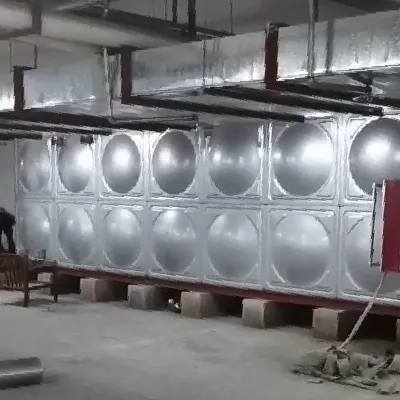loading...
- No. 9, Xingyuan South Street, Dongwaihuan Road, Zaoqiang County, Hengshui, Hebei, China
- admin@zjcomposites.com
- +86 15097380338
- Welcome to visit our website!
Exploring the Importance of Security Measures for FRP Systems and Their Effective Management Techniques
Understanding FRP Guardrails Enhancing Safety in Modern Infrastructure
In an era where infrastructure safety and durability are paramount, Fiber Reinforced Polymer (FRP) guardrails have emerged as a cutting-edge solution to meet these needs. With the increasing demand for effective safety measures on roads, bridges, and various industrial settings, FRP guardrails offer a unique blend of strength, resilience, and lightweight properties that make them a preferred choice for engineers and safety professionals worldwide.
What is FRP?
Fiber Reinforced Polymer (FRP) is a composite material made of a polymer matrix reinforced with fibers, typically glass, carbon, or aramid. This combination results in a material that boasts high tensile strength, excellent fatigue resistance, and corrosion resistance, making it highly suitable for outdoor use and environments where traditional materials like steel or concrete may suffer from degradation over time.
Advantages of FRP Guardrails
One of the primary advantages of FRP guardrails is their lightweight nature. Unlike traditional steel guardrails, which are heavy and require extensive support structures, FRP guardrails can be installed with less labor and support. This not only reduces installation costs but also minimizes the environmental impact associated with heavy machinery and material transport.
Another significant advantage is their durability. FRP materials are inherently resistant to rust and corrosion, making them ideal for use in coastal areas or regions that experience harsh weather conditions. For instance, in environments with high humidity or exposure to saltwater, steel guardrails can quickly deteriorate, leading to increased maintenance costs and safety hazards. In contrast, FRP guardrails maintain their structural integrity and appearance over time, requiring far less maintenance.
frp guardrail

Safety is another critical area where FRP guardrails excel. Their design can be tailored to enhance impact resistance, providing superior protection for drivers and pedestrians alike. The flexible nature of FRP allows it to absorb energy during collisions, reducing the likelihood of severe accidents. Furthermore, the materials can be engineered to meet stringent safety standards and are often tested to ensure they can withstand various impact scenarios.
Sustainability and Environmental Impact
In today's environmentally conscious world, the sustainability of materials used in infrastructure is a major consideration. FRP guardrails are increasingly recognized for their eco-friendly attributes. The manufacturing process can involve recycled materials, and their longevity means that fewer resources need to be expended on replacements and repairs. Additionally, their lightweight nature reduces the carbon footprint associated with transportation and installation.
Applications in Various Fields
The versatility of FRP guardrails extends beyond roads and highways. They are increasingly finding applications in a range of industries, including rail, aerospace, marine, and even architectural design. In rail systems, for example, FRP can be used on station platforms to ensure passenger safety without adding significant weight. In marine applications, FRP guardrails can withstand the corrosive effects of saltwater, making them ideal for docks and waterfronts.
Conclusion
FRP guardrails represent a significant advancement in safety and infrastructure design. With their numerous benefits—including lightweight construction, exceptional durability, and enhanced safety features—they are quickly becoming the material of choice for engineers looking to innovate while ensuring public safety. As infrastructure demands continue to evolve, the adoption of FRP guardrails may well set a new standard in protective safety measures worldwide. Embracing such technologies not only addresses immediate safety concerns but also aligns with broader sustainability goals, paving the way for smarter, safer, and more resilient infrastructure.
-
GRP Structures: The Future of Lightweight, High-Performance EngineeringNewsJun.20,2025
-
FRP Water Tank: High-Performance Storage for Corrosive and Clean Water SystemsNewsJun.20,2025
-
FRP Square Tube: The New Industry Standard for Chemical and Structural ApplicationsNewsJun.20,2025
-
FRP Pultruded Profiles: The Ultimate Choice for Lightweight Structural StrengthNewsJun.20,2025
-
FRP Handrails: The Safer, Smarter, and Stronger Choice for Modern InfrastructureNewsJun.20,2025
-
FRP Grating: The Smart Solution for Durable, Lightweight Industrial FlooringNewsJun.20,2025
-
Why Choose a Galvanized Water Tank for Your Storage NeedsNewsMay.21,2025
